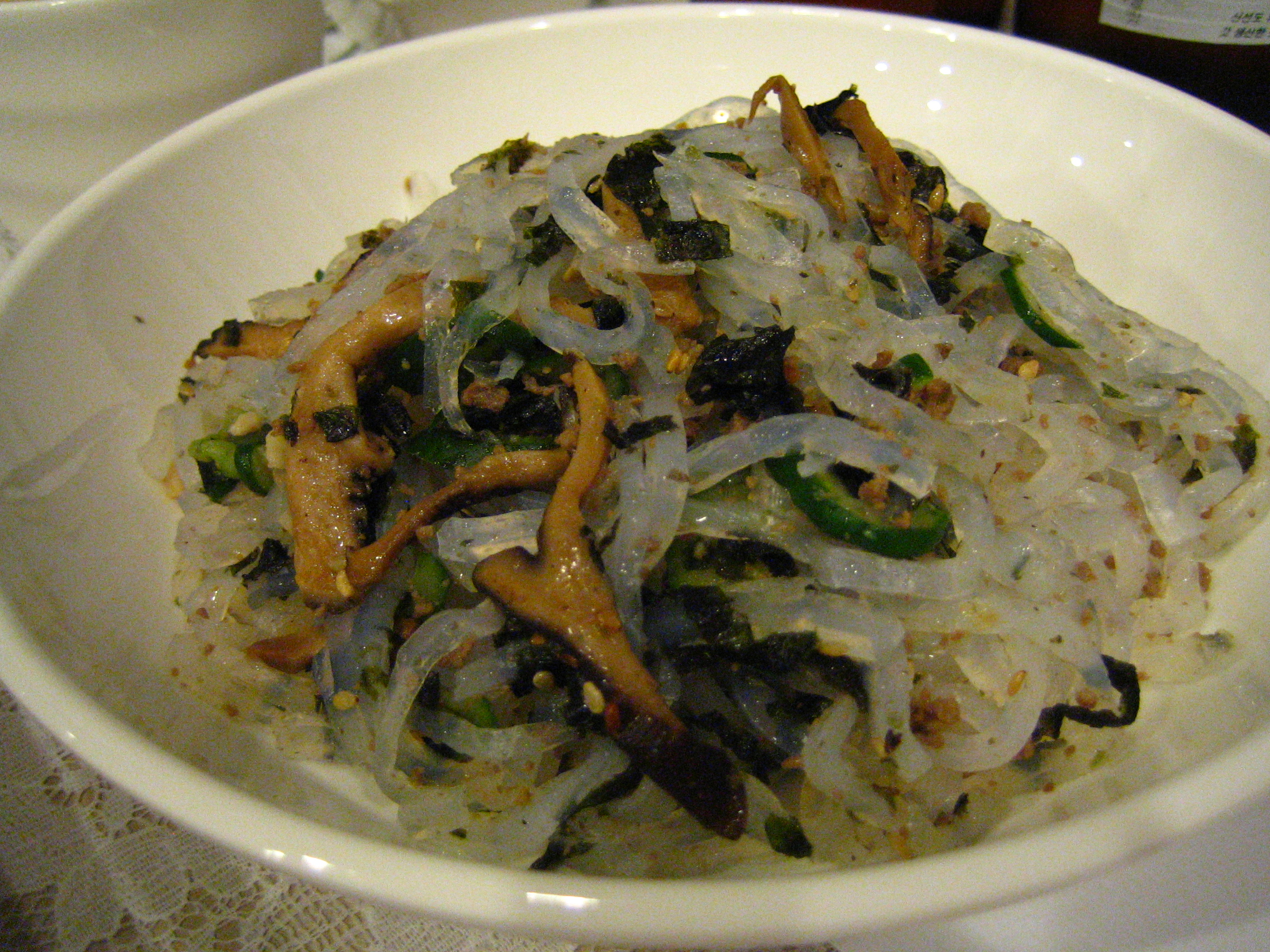- Tangpyeongchae
Infobox Korean name

hangul = 탕평채 or 묵청포
hanja = 蕩平菜 or 묵淸泡
rr = Tangpyeongchae / Mukcheongpo|"Tangpyeongchae" (IPA2|tʰaŋ pʰjʌŋ ʨʰɛ) is a Korean dish that was part of the
Korean royal court cuisine . It is made with shredded "nokdumuk " (mung bean starch jelly), mung bean sprouts,watercress ,red pepper , andseaweeds . "Tangpyeongchae" is seasoned with soy sauce, vinegar, andsesame oil and is most often eaten in late spring and summer.History
According to "Dongguk sesigi" (
hangul :동국세시기,hanja :東國歲時記), a book written in1849 , "tangpyeongchae" derived from a political situation. [cite web|url=http://www.tongilnews.com/news/articleView.html?idxno=72827 |title=Tangpyeongchae, a dish emphasizing balance |publisher=Tongilnews |language=Korean |date=2007-05-24|author=Kim Yang-hui] .King Yeongjo of theJoseon dynasty was concerned about severe conflicts between political parties. Therefore, he tried to resolve the strife between major four parties by frequently holding feasts to make friendly mood. The "Tangpyeong policy" is regarded as his greatest achievement (hangul :탕평책,hanja :蕩平策) which literally means the policy for "harmony" and "meditation". He selected people regardless of their party affiliation.At the beginning of the feast, the king presented "Tangpyeongchae" before the government officers and other politicians, and then said, “As you see, there are four different ingredients (
nokdumuk , gim , beef and dropwort) that have four distinguishable colors and flavors. But they are harmonized so well that they taste beautiful together.” His speech was a great lesson to all those who participated in that party. [cite web|title=Tangpyeongchae|publisher=PrKorea |url=http://prkorea.com/engnews/print_paper.cgi?action=print_paper&number=510&title=%C7%C1%B8%B0%C6%AE |date=2007-02-12 ]References
External links
* [http://english.triptokorea.com/english/viewtopic.php?t=4067&sid=4d830e3a5a0444fd08d6efd6b11e3619 Tangpyeongchae recipe]
Wikimedia Foundation. 2010.
